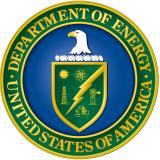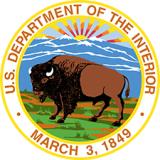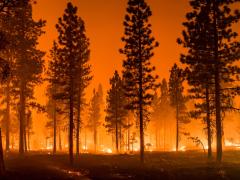Severe Summer Wildfires Are Impacting Western U.S. Mountain Snowpack During Winter and Spring
Key Points
- Fires are burning higher in elevation, increasing the geographical overlap between burned areas and seasonal snow zones (areas with persistent snowpack throughout the winter season).
- We found a 10-fold increase in fire in California's seasonal snow zones in 2020–2021 versus 2001–2019.
- Wildfires accelerate snowmelt resulting in earlier snow disappearance come spring.
- Wildfire decreases the water stored in snow and alters the timing of snowmelt run-off. This creates a significant challenge for water managers to forecast runoff timing and volume.
- Dry spells, which are long periods of no precipitation, increase the effects of wildfire on snow’s ability to store water.
In recent years, wildfires have become more frequent, larger, and burn at higher severity across the western United States and especially in California. These wildfires are burning at higher elevations, which increases the geographical overlap between burned areas and seasonal snow zones (areas with persistent snowpack throughout the winter season). A recently published NIDIS-funded study led by scientists with the Desert Research Institute was motivated by an extended dry spell in the winter of 2021–2022 following multiple severe high-elevation fires in California. The authors were primarily interested in understanding how prolonged dry spells—long periods of no precipitation—during the middle of winter impact how burned landscapes influence snow water storage during a time of year when the snowpack should be accumulating. Study authors also received funding from the U.S. Department of Energy, U.S. Department of the Interior via the Bureau of Reclamation, the USGS Southwest Climate Adaptation Science Center, and NASA, in addition to NIDIS support.
The 2020 and 2021 fire seasons were some of the worst on record in California and included several of the largest wildfires in state history (e.g., the Dixie Fire, the Caldor Fire, and the Creek Fire). Using satellite observations of fire activity, the scientists observed a 10-fold increase in wildfires detected in the seasonal snow zone during 2020 and 2021 compared to 2001–2019. When wildfires burn in areas that receive winter snow, the impact of the charred forest can cause snow to disappear earlier and melt out faster. The changes occur due to two reasons. First, the loss of forest canopy allows more direct sunlight to reach the snowpack. Second, the charred remains of trees and other vegetation shed black carbon onto the snow, reducing the snow’s ability to reflect the incoming sunlight. The combination of darker snow and more sunlight causes more energy to be absorbed by the snowpack. This additional energy causes snow to melt earlier and faster in the spring and as the new research shows, snowmelt can even occur during the middle of winter.
This is an especially important question in California as over one-third of the state’s water supply comes from snowmelt. Acting like water towers in the wintertime, mountain snowpacks are an essential water resource for recharging aquifers and sustaining streamflow through the dry summer and fall months. Snowmelt timing and quantity are key controls on reservoir storage for managing municipal water supply, agricultural use, hydroelectric power generation, and flood control as well as to sustain important freshwater ecosystems. With warmer summer and fall temperatures and increased drying of the atmosphere (factors that also drive increases in wildfire activity), water demands are increasing across the western U.S. Given these strains on our mountain snowpacks, our understanding of changes in snow accumulation patterns and the timing of snowmelt is important to managing resources across the complex patchwork of water rights in the western U.S. Summer and fall wildfires are another disturbance factor throwing a wrench into our long-established patterns of management.
During winter 2021–2022, a multi-week mid-winter Sierra Nevada dry spell (46 days) occurred, the second longest observed at Tahoe City since 1917. Using a 2013 mid-winter dry spell as a comparison, the scientists found that similar weather in 2022 led to 50% less snow cover in the burned areas. This decrease in snow cover was driven by a measurable decrease in the reflectivity of the snow and loss of the forest canopy as observed from satellites. In 2022, the amount of water stored in the snowpack rapidly declined during the dry spell, a pattern not observed in 2013 despite similar meteorological conditions or in non-burned areas in 2022. By reducing snowpack, wildfire creates a new pathway to produce snow drought, further helping drive the western U.S. towards a low-to-no-snow future.
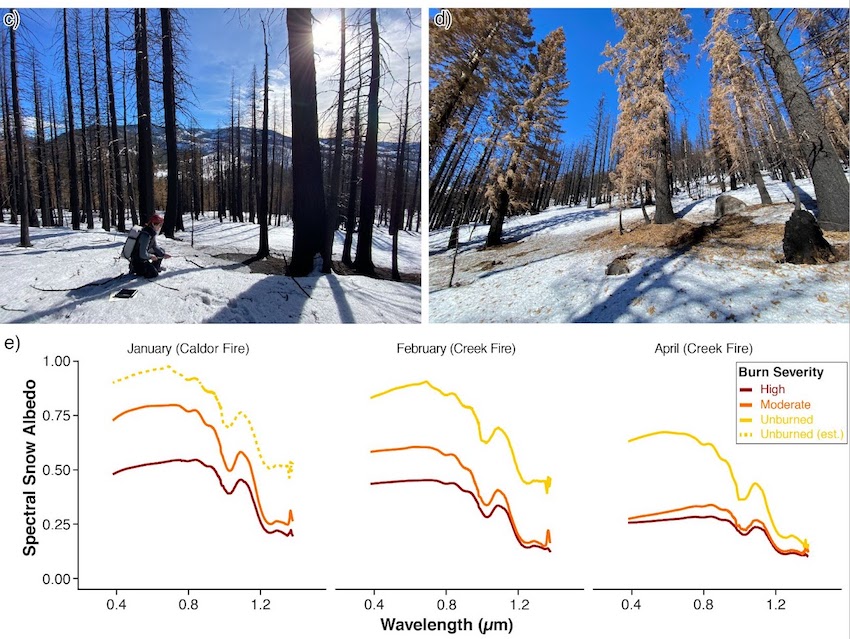
Current operational hydrologic models do not capture these landscape changes. This makes it difficult to forecast the timing and quantity of runoff from snowmelt in burned areas. Management of reservoirs and water infrastructure across California and many locations in the western U.S. seeks to balance managing water as a hazard (i.e., flood control) and managing water as a resource (i.e., storing water in reservoirs). It is important we understand the patterns of melt to make sure we store and convey water efficiently, especially given a future where we expect increasingly severe and more frequent drought conditions. Big snow years, like the current winter, can also be vulnerable to these post-fire changes in snowmelt patterns even if deep snowpacks require more time and energy to melt. Fire's impact on snow is known to last over 10 years following a fire, and come spring, the increased amount of sunlight can cause an earlier onset of melt in burned areas where the snowpack is absorbing more energy.
A review article of the current literature on wildfire’s impact on snow emphasized the critical need to understand how vulnerable seasonal snowpacks, and in turn, water resources, are to high-severity fires. This review further motivates the need for incorporating these changes into our current operational models used to forecast runoff from snow.
Midwinter drought, snow loss, and increasingly large, frequent, and severe wildfires are all expectations of a warming world. Addressing the challenges brought by these changes requires innovative water and forest management plans to be formulated and quickly implemented. Our findings motivate additional research into assessing and planning for post-fire hydrologic changes in snow-dominated landscapes as both wildfire and dry spells will increase in frequency with climate warming.
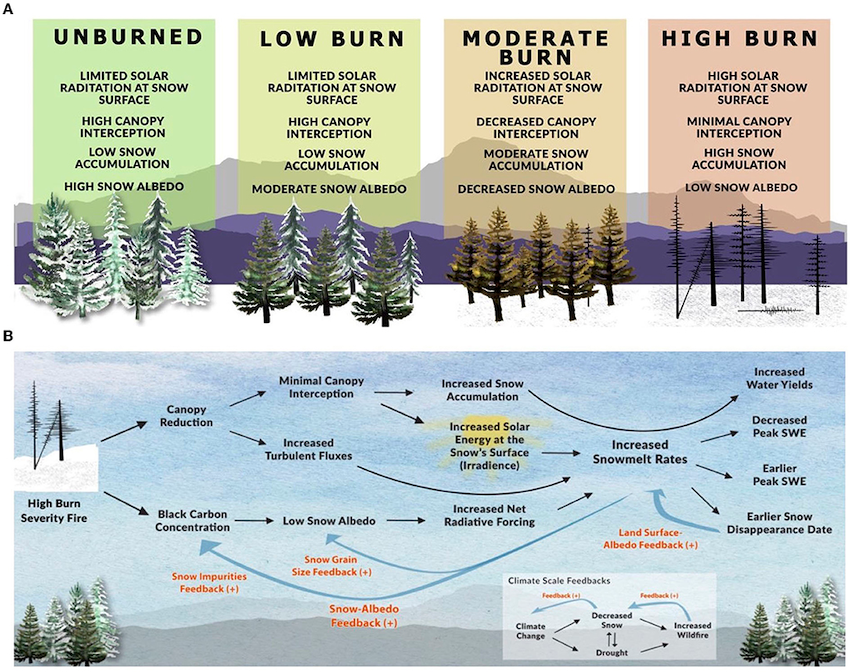
For Additional Reading
Hatchett, B. J., A. M. Rhoades, and D. J. McEvoy. "Monitoring the daily evolution and extent of snow drought." Natural Hazards and Earth System Sciences 22.3 (2022): 869-890. https://doi.org/10.5194/nhess-22-869-2022.
Hatchett, B. J., Koshkin, A. L., Guirguis, K., Rittger, K., Nolin, A. W., Heggli, A., et al. "Midwinter dry spells amplify post-fire snowpack decline." Geophysical Research Letters, 50 (2023) e2022GL101235. https://doi.org/10.1029/2022GL101235.
Koshkin, A. L., B. J. Hatchett, and A.W. Nolin. "Wildfire impacts on western united states snowpacks." Frontiers in Water (2022): 138. https://www.frontiersin.org/articles/10.3389/frwa.2022.971271/full.
Siirila-Woodburn, E. R., et al. "A low-to-no snow future and its impacts on water resources in the western United States." Nature Reviews Earth & Environment 2.11 (2021): 800-819. https://www.nature.com/articles/s43017-021-00219-y.




